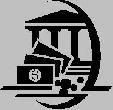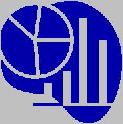
 |
|
| Financial Terms | |
| Current assets |
|
Information about financial, finance, business, accounting, payroll, inventory, investment, money, inventory control, stock trading, financial advisor, tax advisor, credit.
Main Page: credit, tax advisor, money, inventory control, finance, investment, financial advisor, financial, |
Definition of Current assets
Current assetsAmounts receivable by the business within a period of 12 months, including bank, debtors, inventory and prepayments. Current AssetsCash and other company assets that can be readily turned into cash within one year. Current assetsCash, things that will be converted into cash within a year (such as accounts receivable), and inventory. current assetscurrent refers to cash and those assets that will be turned Current assetsValue of cash, accounts receivable, inventories, marketable securities and other assets that
Related Terms:Other current assetsValue of non-cash assets, including prepaid expenses and accounts receivable, due Acid-test ratioAlso called the quick ratio, the ratio of current assets minus inventories, accruals, and prepaid Carring costsCosts that increase with increases in the level of investment in current assets.  Current maturitycurrent time to maturity on an outstanding debt instrument. Current ratioIndicator of short-term debt paying ability. Determined by dividing current assets by current Margin callA demand for additional funds because of adverse price movement. Maintenance margin Net working capitalcurrent assets minus current liabilities. Often simply referred to as working capital. Quick assetscurrent assets minus inventories. Quick ratioIndicator of a company's financial strength (or weakness). Calculated by taking current assets Self-liquidating loanLoan to finance current assets, The sale of the current assets provides the cash to repay Shortage costCosts that fall with increases in the level of investment in current assets. Working capitalDefined as the difference in current assets and current liabilities (excluding short-term  Working capital managementThe management of current assets and current liabilities to maximize shortterm liquidity. ACID-TEST RATIOA ratio that shows how well a company could pay its current debts using only its most liquid or “quick” assets. It’s a more pessimistic—but also realistic—measure of safety than the current ratio, because it ignores sluggish, hard-toliquidate current assets like inventory and notes receivable. Here’s the formula: Current ratioA ratio that shows how many times a company could pay its current debts if it used its current assets to pay them. The formula: NOTES RECEIVABLENotes receivable are promissory notes that the company has accepted from its debtors. Most promissory notes pay interest. Those that are due within a year are shown under “current assets.” Those that mature in more than a year would be listed under “Long-term assets.” If a note is being Working capitalcurrent assets less current liabilities. Money that revolves in the business as part of the process of buying, making and selling goods and services, particularly in relation to debtors, creditors, inventory and bank. Indirect methodA method of preparing the operating section of the Statement of Cash Flows that does not use the company’s actual cash inflows and cash outflows, but instead arrives at the net cash flow by taking net income and adjusting it for noncash expenses and the changes from last year in the current assets and current liabilities. current ratioCalculated to assess the short-term solvency, or debt-paying Current RatioA measure of the ability of a company to use its current assets to Quick RatioA measure of how easily a company can use its most liquid current working capitaltotal current assets minus total current liabilities Working capitalThe amount of a company’s current assets minus its current liabilities;  carrying costsCosts of maintaining current assets, including opportunity cost of capital. net working capitalcurrent assets minus current liabilities. shortage costsCosts incurred from shortages in current assets. Working Capitalcurrent assets minus current liabilities Current Ratiocurrent assets divided by current liabilities. This ratio indicates the extent to which the claims of short-term creditors are covered by assets expected to be converted to cash in the near future. Working CapitalFunds invested in a company's cash, accounts receivable and inventory. Net working capital is current assets minus current liabilities. Acquisition of assetsA merger or consolidation in which an acquirer purchases the selling firm's assets. AssetsA firm's productive resources. Assets requirementsA common element of a financial plan that describes projected capital spending and the Current accountNet flow of goods, services, and unilateral transactions (gifts) between countries. Current couponA bond selling at or close to par, that is, a bond with a coupon close to the yields currently Current liabilitiesAmount owed for salaries, interest, accounts payable and other debts due within 1 year. Current issueIn Treasury securities, the most recently auctioned issue. Trading is more active in current Current rate methodUnder this currency translation method, all foreign currency balance-sheet and income Current yieldFor bonds or notes, the coupon rate divided by the market price of the bond. Current-coupon issuesRelated: Benchmark issues Exchange of assetsAcquisition of another company by purchase of its assets in exchange for cash or stock. Financial assetsClaims on real assets. Long-term assetsValue of property, equipment and other capital assets minus the depreciation. This is an Net assetsThe difference between total assets on the one hand and current liabilities and noncapitalized longterm Non-reproducible assetsA tangible asset with unique physical properties, like a parcel of land, a mine, or a Publicly traded assetsassets that can be traded in a public market, such as the stock market. Real assetsIdentifiable assets, such as buildings, equipment, patents, and trademarks, as distinguished from a Reproducible assetsA tangible asset with physical properties that can be reproduced, such as a building or Residual assetsassets that remain after sufficient assets are dedicated to meet all senior debtholder's claims in full. Return on assets (ROA)Indicator of profitability. Determined by dividing net income for the past 12 months Return on total assetsThe ratio of earnings available to common stockholders to total assets. ASSETSAnything of value that a company owns. Current liabilitiesBills a company must pay within the next twelve months. RATE OF RETURN ON TOTAL ASSETSThe percentage return or profit that management made on each dollar of assets. The formula is: AssetsThings that the business owns. Current liabilitiesAmounts due and payable by the business within a period of 12 months, e.g. bank overdraft, creditors and accruals. Fixed assetsThings that the business owns and are part of the business infrastructure – fixed assets may be Intangible fixed assetsNon-physical assets, e.g. customer goodwill or intellectual property (patents and trademarks). Tangible fixed assetsPhysical assets that can be seen and touched, e.g. buildings, machinery, vehicles, computers etc. AssetsItems owned by the company or expenses that have been paid for but have not been used up. Intangible assetsassets owned by the company that do not possess physical substance; they usually take the form of rights and privileges such as patents, copyrights, and franchises. current liabilitiescurrent means that these liabilities require payment in fixed assetsAn informal term that refers to the variety of long-term operating return on assets (ROA)Although there is no single uniform practice for Fixed Assets Turnover RatioA measure of the utilization of a company's fixed assets to Return on Total Assets RatioA measure of the percentage return earned on the value of the Total Debt to Total Assets RatioSee debt ratio concurrent engineeringsee simultaneous engineering Current assetTypically the cash, accounts receivable, and inventory accounts on the Current costUnder target costing concepts, this is the cost that would be applied to a Current liabilityThis is typically the accounts payable, short-term notes payable, and Other assetsA cluster of accounts that are listed after fixed assets on the balance sheet, current yieldAnnual coupon payments divided by bond price. financial assetsClaims to the income generated by real assets. Also called securities. real assetsassets used to produce goods and services. Current AccountThat part of the balance of payments accounts that records demands for and supplies of a currency arising from activities that affect current income, namely imports, exports, investment income payments such as interest and dividends, and transfers such as gifts, pensions, and foreign aid. Current DollarsA variable like GDP is measured in current dollars if each year's value is measured in prices prevailing during that year. In contrast, when measured in real or constant dollars, each year's value is measured in a base year's prices. Current YieldThe percentage return on a financial asset based on the current price of the asset, without reference to any expected change in the price of the asset. This contrasts with yield-to-maturity, for which the calculation includes expected price changes. See also yield. Current Tax Payment Act of 1943A federal Act requiring employers to withhold income taxes from employee pay. Current Income Tax ExpenseThat portion of the total income tax provision that is based on Preferred Stock Stock that has a claim on assets and dividends of a corporation that are priorto that of common stock. Preferred stock typically does not carry the right to vote. Realizable Revenue A revenue transaction where assets received in exchange for goods andservices are readily convertible into known amounts of cash or claims to cash. Current LiabilitiesDebts or other obligations coming due within a year. Fixed AssetsLand, buildings, plant, equipment, and other assets acquired for carrying on the business of a company with a life exceeding one year. Normally expressed in financial accounts at cost, less accumulated depreciation. Longer-Term Fixed Assetsassets having a useful life greater than one year but the duration of the 'long term' will vary with the context in which the term is applied. Personal Assetsassets, the title of which are held personally rather than in the name of some other legal entity. InventoryFor companies: Raw materials, items available for sale or in the process of being made ready for Monetary / non-monetary methodUnder this translation method, monetary items (e.g. cash, accounts Price/book ratioCompares a stock's market value to the value of total assets less total liabilities (book Replacement valuecurrent cost of replacing the firm's assets. Short-term solvency ratiosRatios used to judge the adequacy of liquid assets for meeting short-term Temporal methodUnder this currency translation method, the choice of exchange rate depends on the acid test ratio (also called the quick ratio)The sum of cash, accounts receivable, and short-term marketable Replacement ValueThe amount necessary to duplicate a company's assets at current Capitalized ExpendituresExpenditures that are accounted for as assets to be amortized Change in Accounting EstimateA change in accounting that occurs as the result of new information Related to : financial, finance, business, accounting, payroll, inventory, investment, money, inventory control, stock trading, financial advisor, tax advisor, credit. |